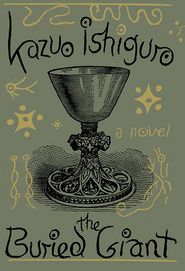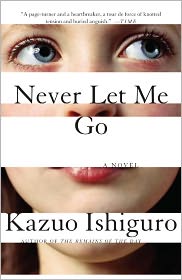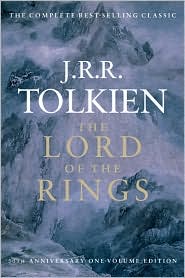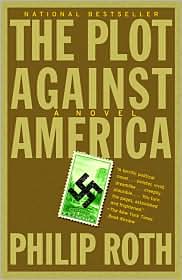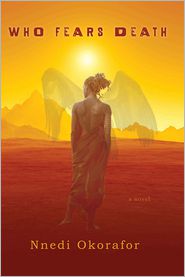Ishiguro’s The Buried Giant and the Coming Gray Genre
If, while strolling through a bookstore or clicking around on the web, you’ve recently laid eyes on the cover for Kazuo Ishiguro’s The Buried Giant, you’d be forgiven for not realizing it is, in its own quiet way, one of the most controversial novels published this year, and possibly this decade.
The Buried Giant
The Buried Giant
Hardcover $26.95
The controversy has nothing to do with racy content, or fringe politics, or any hot-button culture-war issues. The controversy centers on whether Ishiguro’s novel—which includes references to giants, ogres, dragons, and magic—could, or should, be considered a fantasy novel, as opposed to a “literary” work. Ishiguro himself made a few off-the-cuff public comments that were taken by fans of fantasy to indicate that he disparages the genre, telling the New York Times, “Will [readers] understand what I’m trying to do, or will they be prejudiced against the surface elements? Are they going to say this is fantasy?”
For genre readers, them’s fighting words, and Ishiguro found himself in a baffling public relations war over his apparent “snobbery.” Ursula K. LeGuin, titan of sci-fi and fantasy writing, publicly responded to Ishiguro’s comments on her blog, writing “Well, yes, they probably will. Why not? It appears that the author takes the word for an insult. No writer can successfully use the ‘surface elements’ of a literary genre — far less its profound capacities—for a serious purpose, while despising it to the point of fearing identification with it.”
The controversy has nothing to do with racy content, or fringe politics, or any hot-button culture-war issues. The controversy centers on whether Ishiguro’s novel—which includes references to giants, ogres, dragons, and magic—could, or should, be considered a fantasy novel, as opposed to a “literary” work. Ishiguro himself made a few off-the-cuff public comments that were taken by fans of fantasy to indicate that he disparages the genre, telling the New York Times, “Will [readers] understand what I’m trying to do, or will they be prejudiced against the surface elements? Are they going to say this is fantasy?”
For genre readers, them’s fighting words, and Ishiguro found himself in a baffling public relations war over his apparent “snobbery.” Ursula K. LeGuin, titan of sci-fi and fantasy writing, publicly responded to Ishiguro’s comments on her blog, writing “Well, yes, they probably will. Why not? It appears that the author takes the word for an insult. No writer can successfully use the ‘surface elements’ of a literary genre — far less its profound capacities—for a serious purpose, while despising it to the point of fearing identification with it.”
Never Let Me Go
Never Let Me Go
In Stock Online
Paperback $17.00
It wasn’t the first time the author has imported genre tropes into his work, of course; His 2006 novel Never Let Me Go was widely regarded as science fiction, seeing as it was set in an unspecified future and involved clones being harvested for organs. That novel was well-received and generated little or no controversy, possibly because it was more or less received as a “literary” sci-fi novel, and Ishiguro made no public hand-wringing comments about being terrified it wouldn’t be perceived as such.
For most readers, of course, this is a tempest in a teacup, two writers snarking at each other, tapping out indignant responses in a war of words. But something really interesting is going on under the surface: genre—those oft-deprecated categories of novels that are dismissed as “popular” or “for the fans”—is invading “literary” writing, regarded as more serious, more challenging, and more culturally significant, and it’s doing so at an increasing pace, and with increasing success. If a writer like Ishiguro, who wrote The Remains of the Day, can write a novel that includes dragons and ogres, will genre divisions even exist a few years from now? Are we heading for a “Gray Genre” where literature is simply literature, whether it involves ray-guns, magic spells, dead bodies, or international secret agents?
Is The Buried Giant a Fantasy?
Before getting into the possibility that genre is staging an invasion of “literary” work, it’s worth considering whether Ishiguro’s novel is actually a fantasy, related via familiar tropes to The Lord of the Rings and A Song of Ice and Fire.
It isn’t.
It wasn’t the first time the author has imported genre tropes into his work, of course; His 2006 novel Never Let Me Go was widely regarded as science fiction, seeing as it was set in an unspecified future and involved clones being harvested for organs. That novel was well-received and generated little or no controversy, possibly because it was more or less received as a “literary” sci-fi novel, and Ishiguro made no public hand-wringing comments about being terrified it wouldn’t be perceived as such.
For most readers, of course, this is a tempest in a teacup, two writers snarking at each other, tapping out indignant responses in a war of words. But something really interesting is going on under the surface: genre—those oft-deprecated categories of novels that are dismissed as “popular” or “for the fans”—is invading “literary” writing, regarded as more serious, more challenging, and more culturally significant, and it’s doing so at an increasing pace, and with increasing success. If a writer like Ishiguro, who wrote The Remains of the Day, can write a novel that includes dragons and ogres, will genre divisions even exist a few years from now? Are we heading for a “Gray Genre” where literature is simply literature, whether it involves ray-guns, magic spells, dead bodies, or international secret agents?
Is The Buried Giant a Fantasy?
Before getting into the possibility that genre is staging an invasion of “literary” work, it’s worth considering whether Ishiguro’s novel is actually a fantasy, related via familiar tropes to The Lord of the Rings and A Song of Ice and Fire.
It isn’t.
The Lord of the Rings
The Lord of the Rings
In Stock Online
Paperback $35.00
Superficially, you’re tempted to say, of course it is. Magic, ogres, knights on horseback—it’s got it all! Except, it doesn’t. The Buried Giant fails the Fantasy Check on almost every level. It’s set in the real world, in a specific historical context (England after the departure of the Romans), not in a fantasy world of the author’s creation, or even a “fantastic” version of our world.
Even more telling, the references to magical creatures, and magic itself, are largely assumed—real enough for the characters, but a close reading reveals the magic of this post-Roman England is all myths and legends, mere campfire stories. Everyone assumes they’re true in the same way children are convinced the Boogeyman lives under their beds. There is almost no actual magic in the novel. Even the she-dragon who looms so large in the latter part of the book, Querig, is described strangely (for a dragon): “In fact it took a moment to ascertain this was a dragon at all: She was so emaciated she looked more some work-like reptile accustomed to water that had mistakenly come aground and was in the process of dehydrating.” This is no flying, fire-breathing Smaug, but the sort of half-glimpsed phenomenon that spurs myths.
If you read the book more than once, and with some care, you’ll quickly find it would be very easy to argue nothing magical exists in the story at all. All the magic and creatures are, in fact, perfectly mundane. The characters are superstitious people, who assume monsters and spells explain everything—and so that is what they perceive.
So, no, the novel that spurred this debate is not technically a work of fantasy. But it still prompts the question: is genre fading away, being subsumed into a “gray genre” that uses tropes from all kinds of stories, as the author wishes? Ishiguro’s use of fantasy elements may be more complex than a simple tale of a magical land and warriors hunting dragons, but is it evidence that literary work is absorbing genre?
The Genre Continental Drift
Will we ever walk into a bookstore that doesn’t have some sort of categorization for books? Probably not. But what’s considered “literary” and what’s considered “genre”—as well as the relative cultural value and gravity assigned to each—is definitely shifting. Consider that The Lord of the Rings is categorized as “epic fantasy” despite Tolkien’s deep mythology, constructed languages, volumes of supporting material, and the books’ undeniable influence. That’s how powerful the term “fantasy” once was: it could doom one of the most influential works of the 20th century to being considered, at best, accomplished escapism or, at worst, in the words of critic Edmund Wilson, “long-winded volumes of what looks to this reviewer like balderdash” and “juvenile trash.”
Superficially, you’re tempted to say, of course it is. Magic, ogres, knights on horseback—it’s got it all! Except, it doesn’t. The Buried Giant fails the Fantasy Check on almost every level. It’s set in the real world, in a specific historical context (England after the departure of the Romans), not in a fantasy world of the author’s creation, or even a “fantastic” version of our world.
Even more telling, the references to magical creatures, and magic itself, are largely assumed—real enough for the characters, but a close reading reveals the magic of this post-Roman England is all myths and legends, mere campfire stories. Everyone assumes they’re true in the same way children are convinced the Boogeyman lives under their beds. There is almost no actual magic in the novel. Even the she-dragon who looms so large in the latter part of the book, Querig, is described strangely (for a dragon): “In fact it took a moment to ascertain this was a dragon at all: She was so emaciated she looked more some work-like reptile accustomed to water that had mistakenly come aground and was in the process of dehydrating.” This is no flying, fire-breathing Smaug, but the sort of half-glimpsed phenomenon that spurs myths.
If you read the book more than once, and with some care, you’ll quickly find it would be very easy to argue nothing magical exists in the story at all. All the magic and creatures are, in fact, perfectly mundane. The characters are superstitious people, who assume monsters and spells explain everything—and so that is what they perceive.
So, no, the novel that spurred this debate is not technically a work of fantasy. But it still prompts the question: is genre fading away, being subsumed into a “gray genre” that uses tropes from all kinds of stories, as the author wishes? Ishiguro’s use of fantasy elements may be more complex than a simple tale of a magical land and warriors hunting dragons, but is it evidence that literary work is absorbing genre?
The Genre Continental Drift
Will we ever walk into a bookstore that doesn’t have some sort of categorization for books? Probably not. But what’s considered “literary” and what’s considered “genre”—as well as the relative cultural value and gravity assigned to each—is definitely shifting. Consider that The Lord of the Rings is categorized as “epic fantasy” despite Tolkien’s deep mythology, constructed languages, volumes of supporting material, and the books’ undeniable influence. That’s how powerful the term “fantasy” once was: it could doom one of the most influential works of the 20th century to being considered, at best, accomplished escapism or, at worst, in the words of critic Edmund Wilson, “long-winded volumes of what looks to this reviewer like balderdash” and “juvenile trash.”
The Plot Against America
The Plot Against America
By Philip Roth
In Stock Online
Paperback $18.00
And yet, in recent years, writers with significant literary pedigrees have been quietly stealing ideas from genre. Philip Roth published The Plot Against America, a more or less straightforward alternate history novel, placing it squarely in the science fiction bracket alongside works by genre writers such as Harry Turtledove. Justin Cronin’s The Passage and Elizabeth Kostova’s The Historian were both greeted as literary works and not, you know, horror novels about vampires.
Likewise, Cormac McCarthy, Jonathan Lethem, and Michael Chabon have all written novels that would have been considered science fiction or fantasy if someone else’s name had been on the cover. You could make a decent argument that the whole diffuse category of “magical realism” was invented so reputable literary writers could throw some magic into their books without being shelved alongside all the urban fantasy werewolf investigators.
So if it’s happening, and happening more and more frequently, then why is it happening? A cynical theory might be sales: simply put, genre sells better. As far back as 2010, fantasy and sci-fi made up 10 percent of fiction sales. Literary novels, just 7 percent. The genres placed 358 titles on the bestseller list that year, and it’s been growing ever since.
And yet, in recent years, writers with significant literary pedigrees have been quietly stealing ideas from genre. Philip Roth published The Plot Against America, a more or less straightforward alternate history novel, placing it squarely in the science fiction bracket alongside works by genre writers such as Harry Turtledove. Justin Cronin’s The Passage and Elizabeth Kostova’s The Historian were both greeted as literary works and not, you know, horror novels about vampires.
Likewise, Cormac McCarthy, Jonathan Lethem, and Michael Chabon have all written novels that would have been considered science fiction or fantasy if someone else’s name had been on the cover. You could make a decent argument that the whole diffuse category of “magical realism” was invented so reputable literary writers could throw some magic into their books without being shelved alongside all the urban fantasy werewolf investigators.
So if it’s happening, and happening more and more frequently, then why is it happening? A cynical theory might be sales: simply put, genre sells better. As far back as 2010, fantasy and sci-fi made up 10 percent of fiction sales. Literary novels, just 7 percent. The genres placed 358 titles on the bestseller list that year, and it’s been growing ever since.
George R. R. Martin's A Game of Thrones 5-Book Boxed Set (Song of Ice and Fire Series): A Game of Thrones, A Clash of Kings, A Storm of Swords, A Feast for Crows, and A Dance with Dragons
George R. R. Martin's A Game of Thrones 5-Book Boxed Set (Song of Ice and Fire Series): A Game of Thrones, A Clash of Kings, A Storm of Swords, A Feast for Crows, and A Dance with Dragons
In Stock Online
Paperback $49.95
Even more important than book sales is the potential for a lucrative adaptation. In the book world, George R.R. Martin, the author of the wildly successful A Song of Ice and Fire series, is regarded as a superstar. But it wasn’t until HBO adapted the books as TV show Game of Thrones that Martin became a household name. Similarly, Charlaine Harris’s Southern Vampire novels were big hits—but became a cultural phenomenon when brought to TVs everywhere as True Blood (again, by HBO).
Looking at the summer blockbuster film schedule each year, one thing is clear: science fiction and fantasy rule the roost. Not only is there a lot of money in the sale of film rights alone, there are boosts in both book sales and prestige. While no one is going to argue that Ishiguro wrote The Buried Giant because he’s dreaming of big Hollywood money and a Joss Whedon adaptation, the fact is, if you’re trying to make a living as a novelist—a difficult prospect under any conditions—you have a better chance at selling a novel, for a larger advance and print run, if it appeals to a genre audience. As this absorption of genre elements into more “literary” works grows, it becomes more and more acceptable, even desirable, to do so—after all, authors do love their toys, and having more of them to play with to create your story is exciting. Someone like Ishiguro doesn’t have to be a cynical sales-chaser to appropriate these elements. It’s simply become more acceptable in recent years.
The Mainstream
Even more important than book sales is the potential for a lucrative adaptation. In the book world, George R.R. Martin, the author of the wildly successful A Song of Ice and Fire series, is regarded as a superstar. But it wasn’t until HBO adapted the books as TV show Game of Thrones that Martin became a household name. Similarly, Charlaine Harris’s Southern Vampire novels were big hits—but became a cultural phenomenon when brought to TVs everywhere as True Blood (again, by HBO).
Looking at the summer blockbuster film schedule each year, one thing is clear: science fiction and fantasy rule the roost. Not only is there a lot of money in the sale of film rights alone, there are boosts in both book sales and prestige. While no one is going to argue that Ishiguro wrote The Buried Giant because he’s dreaming of big Hollywood money and a Joss Whedon adaptation, the fact is, if you’re trying to make a living as a novelist—a difficult prospect under any conditions—you have a better chance at selling a novel, for a larger advance and print run, if it appeals to a genre audience. As this absorption of genre elements into more “literary” works grows, it becomes more and more acceptable, even desirable, to do so—after all, authors do love their toys, and having more of them to play with to create your story is exciting. Someone like Ishiguro doesn’t have to be a cynical sales-chaser to appropriate these elements. It’s simply become more acceptable in recent years.
The Mainstream
The Magicians (Magicians Series #1)
The Magicians (Magicians Series #1)
By Lev Grossman
In Stock Online
Paperback $18.00
Another aspect to consider is more primal: after decades of laboring as the deprecated geeks and nerds of literature, genre has emerged into a dominant mainstream. People flocking to the theater to watch Avengers: Age of Ultron, or sitting down to binge on Daredevil on Netflix or Game of Thrones on HBO may not think of themselves as sci-fi or fantasy fans—but they are. And that has propelled genre to the forefront. As Lev Grossman, author of The Magicians trilogy said a few years ago: “We are the mainstream. Literary fiction is a subculture.”
A lot of classic works incorporated what would today be considered fantastic elements, of course, although you can’t rightly call them fantasy or science fiction, as the terms didn’t exist. But the magic, creatures, and vengeful (not to mention lustful) gods of myth and legend, the witches and dragons of medieval literature, and the ghosts and hauntings of Shakespeare establish, if nothing else, a clear precedent for their presence in today’s literature. One reason the genre lines may remain stark is what writers choose to do with these tropes and elements. While Ishiguro has written a beautiful, haunting book that explores themes of memory and history, he has not written a novel that would satisfy a fan of (for example) Brandon Sanderson, who favors intricate magic systems and epic adventures set in otherworldly realms.
Another aspect to consider is more primal: after decades of laboring as the deprecated geeks and nerds of literature, genre has emerged into a dominant mainstream. People flocking to the theater to watch Avengers: Age of Ultron, or sitting down to binge on Daredevil on Netflix or Game of Thrones on HBO may not think of themselves as sci-fi or fantasy fans—but they are. And that has propelled genre to the forefront. As Lev Grossman, author of The Magicians trilogy said a few years ago: “We are the mainstream. Literary fiction is a subculture.”
A lot of classic works incorporated what would today be considered fantastic elements, of course, although you can’t rightly call them fantasy or science fiction, as the terms didn’t exist. But the magic, creatures, and vengeful (not to mention lustful) gods of myth and legend, the witches and dragons of medieval literature, and the ghosts and hauntings of Shakespeare establish, if nothing else, a clear precedent for their presence in today’s literature. One reason the genre lines may remain stark is what writers choose to do with these tropes and elements. While Ishiguro has written a beautiful, haunting book that explores themes of memory and history, he has not written a novel that would satisfy a fan of (for example) Brandon Sanderson, who favors intricate magic systems and epic adventures set in otherworldly realms.
1632 (1632 Series)
1632 (1632 Series)
By Eric Flint
In Stock Online
Paperback $9.99
Similarly, when Philip Roth writes an alternate history, he does so with less focus on the fun of tracing possible permutations from small changes in the flow of time, and more on issues of racism, coming of age, and society in general. Fans of Harry Turtledove’s series that imagine a future following the South’s victory in the Civil War, not to mention a sudden invasion of lizard-like aliens in the middle of World War II, will find little to excite them in Roth’s story. Which is not to say they couldn’t enjoy it, of course—but if Roth’s book was shelved in sci-fi, readers looking for the next 1632 won’t find it there.
In the end, all that’s happening is that writers are feeling freer to include genre elements in their novels that they didn’t before. Literary works can, if need be, include ideas and explore themes they couldn’t a few years ago, like Ishiguro using the idea of a dragon exhaling a mist that makes an entire country forget its own past in order to explore an emotional journey of remembrance. It all leads to a richer, more dynamic, and more interesting collection of books.
Working Both Ways
It could also be argued that this is not a one-way process—that genre is absorbing many of the techniques and tropes of literary fiction, and thus becoming more complex, more layered. A Song of Ice and Fire is often celebrated as the fantasy series that edged away from the repetitive books of the 1970s and ’80s, books that aped Tolkien and seemed to be populated by symbols rather than characters (the bearded wizard, the noble knight, ogres and elves that were almost color-coded for good or evil). Martin came in with his Lannisters and Starks and a story inspired by the Wars of the Roses, a fantasy series entirely lacking in magic for long stretches of time, a series that explores violence, the cost of power, the impact of war, and even the political consequences of incest. Out go the simple good and evil power structures of old-school fantasy; in rush complex interlocking stories and characters who evolve and change.
Similarly, when Philip Roth writes an alternate history, he does so with less focus on the fun of tracing possible permutations from small changes in the flow of time, and more on issues of racism, coming of age, and society in general. Fans of Harry Turtledove’s series that imagine a future following the South’s victory in the Civil War, not to mention a sudden invasion of lizard-like aliens in the middle of World War II, will find little to excite them in Roth’s story. Which is not to say they couldn’t enjoy it, of course—but if Roth’s book was shelved in sci-fi, readers looking for the next 1632 won’t find it there.
In the end, all that’s happening is that writers are feeling freer to include genre elements in their novels that they didn’t before. Literary works can, if need be, include ideas and explore themes they couldn’t a few years ago, like Ishiguro using the idea of a dragon exhaling a mist that makes an entire country forget its own past in order to explore an emotional journey of remembrance. It all leads to a richer, more dynamic, and more interesting collection of books.
Working Both Ways
It could also be argued that this is not a one-way process—that genre is absorbing many of the techniques and tropes of literary fiction, and thus becoming more complex, more layered. A Song of Ice and Fire is often celebrated as the fantasy series that edged away from the repetitive books of the 1970s and ’80s, books that aped Tolkien and seemed to be populated by symbols rather than characters (the bearded wizard, the noble knight, ogres and elves that were almost color-coded for good or evil). Martin came in with his Lannisters and Starks and a story inspired by the Wars of the Roses, a fantasy series entirely lacking in magic for long stretches of time, a series that explores violence, the cost of power, the impact of war, and even the political consequences of incest. Out go the simple good and evil power structures of old-school fantasy; in rush complex interlocking stories and characters who evolve and change.
Who Fears Death
Who Fears Death
In Stock Online
Paperback $8.99
The last two decades have arguably been a new Golden Age for science fiction and fantasy, as each genre has seen incredible writers take ideas that were the exclusive province of literary novels and use them to produce genre works that challenge readers with complex plots, detailed symbolism, and characters evading easy definition. The Book of the New Sun, Who Fears Death, The First Law series: these are works that subvert and invert tropes, and paint the corners of their pages with literary skill inspiring analysis, discussion, and investigation.
In short, we’re seeing some of the best genre writing and the best literary fiction of all time, right now, and it’s because the shelving categories are all rubbing against each other and leaving bits and pieces of themselves behind. It’s a glorious time to be a book lover.
Now, if we could just get authors to stop acting like genre labels have cooties, we’d be in fine shape.
Shop all fiction >
The last two decades have arguably been a new Golden Age for science fiction and fantasy, as each genre has seen incredible writers take ideas that were the exclusive province of literary novels and use them to produce genre works that challenge readers with complex plots, detailed symbolism, and characters evading easy definition. The Book of the New Sun, Who Fears Death, The First Law series: these are works that subvert and invert tropes, and paint the corners of their pages with literary skill inspiring analysis, discussion, and investigation.
In short, we’re seeing some of the best genre writing and the best literary fiction of all time, right now, and it’s because the shelving categories are all rubbing against each other and leaving bits and pieces of themselves behind. It’s a glorious time to be a book lover.
Now, if we could just get authors to stop acting like genre labels have cooties, we’d be in fine shape.
Shop all fiction >
